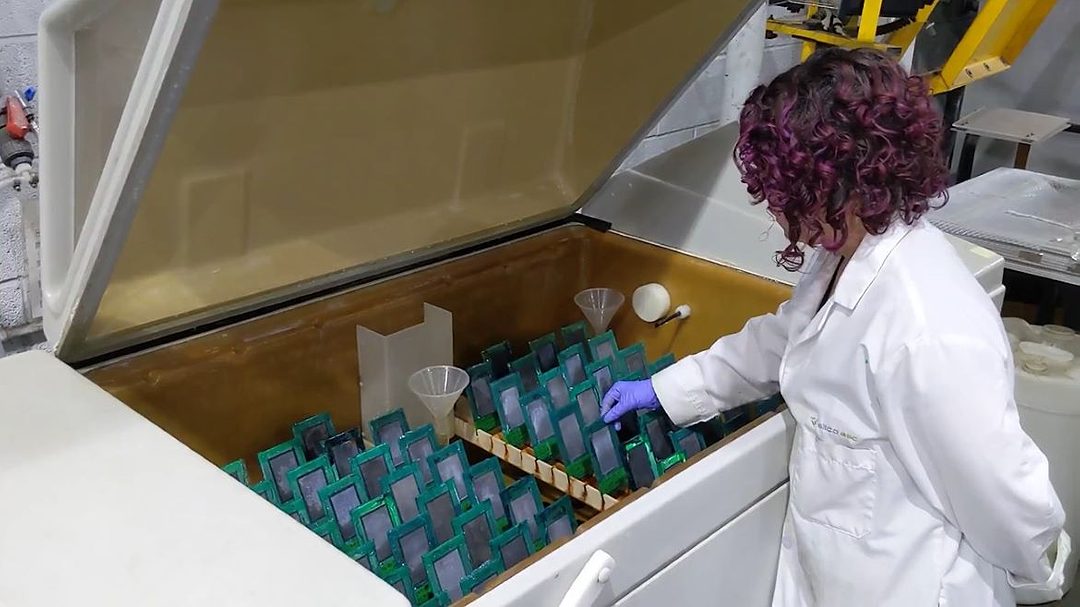Corrosion Protection: Developing the Best Preventative Measures to Reduce Corrosion

Photos courtesy of SIFCO ASC.

Photos courtesy of SIFCO ASC.


Carbon and high-strength steels are some of the most widely used metals today, and the corrosion of this type of material is a serious problem for a variety of industries including engineering, manufacturing and aerospace. If left untreated, metal corrosion can affect a business from both economic and structural integrity standpoints. However, corrosion can largely be controlled with developments in various protective solutions. Sarah Medeiros, Corrosion Engineer at SIFCO ASC, discusses developments in R&D to help slow down the corrosion process.
The shutdown and failure of equipment due to corrosion can cause major setbacks for any industry, especially when experiencing equipment failure or replacement, leading to loss of productivity and efficiency. This is why comprehensive research is undertaken to identify the effects and risks of corrosion to better understand which types of metals are most likely to be affected as well as developing the best preventative measures to reduce corrosion.
The Challenges Facing Engineering, Manufacturing and Aerospace
There are a variety of challenges when it comes to preventing corrosion, especially when working in hot and humid environments, and even not wiping off chemicals or cleaning equipment can result in issues. However, having a proper maintenance schedule that includes keeping both machine and equipment clean as well as being situated within an air-conditioned environment will extend equipment and machine life.
As well as being economically important, there is the additional sustainability issue when it comes to corrosion protection. While accounting for depreciation might set the expected lifetime for a certain number of years for a specific piece of equipment or component, by adding corrosion protection you have the ability to further extend that lifetime, which is far more sustainable than replacement.
Types of Metals at Risk of Corrosion
Carbon and high-strength steels are very susceptible to corrosion because these alloys have been designed primarily for strength and lack the chromium content found in stainless steels that prevent corrosion. The aerospace industry is a prime example of the necessity of corrosion prevention, due to the wide variety of environments that materials are exposed to, especially the high-strength steel landing gears on planes. With this type of steel, hydrogen embrittlement adds an element of risk. Another alternative electroplated deposit for corrosion protection is tin zinc, however, one of its disadvantages is it has less optimum wear properties when compared to zinc nickel.
Corrosion protection relies heavily on testing, and it produces a great deal of data that needs to be analyzed. This research helps to benefit businesses within engineering, manufacturing and the aerospace industry. R&D departments regularly work on different projects and corrosive scenarios. One major product that the team at SIFCO ASC are involved with is a cadmium replacement technology – a zinc nickel alloy. The two primary forms of corrosion that are most likely to affect substrates that have traditionally been electroplated with cadmium are hydrogen embrittlement and general corrosion. By adjusting and homing in on a variety of plating parameters, zinc nickel has met or exceeded cadmium selective plating, especially during salt spray testing.
Optimizing this deposit and plating parameters, along with the subsequent research and testing are driven by regulations that aim to reduce the use of harmful chemicals like cadmium, which is a carcinogen, whereas zinc nickel is less harmful. A lot of the testing within zinc nickel helps to support businesses with their corrosion protection goals and, in some instances, helps them work with the military to roll the system out where advances in corrosion protection are vital.
Translating the Data Into Real-World Problem Solving
Data gained from testing can be used to work on other projects that will help to advance corrosion protection. The ASCS (Advanced Solution Control System) is one such project, which is a fully automated, dripless, selective electroplating system from SIFCO ASC. One of the many benefits of this type of technology is that due to the dripless design the plating solution is vacuumed away during the plating process, allowing an even tighter control on testing parameters and reducing hazardous waste.
Additional testing has involved looking at the effects of the appearance and morphology of the deposit and how it affects the overall performance. As well as ensuring that the part or component is protected and performs to the highest standard possible, in some cases it is important that the end result looks aesthetically pleasing which is why further testing here is key.
Supporting the Customer
With a considerable amount of time and research going into the development of corrosion protection technologies, the industry and customers’ needs are always changing, which in turn will change our priorities and determine how we can advance selective electroplating further. As a business, SIFCO ASC helps customers to meet their selective plating requirements, by using engineering expertise and continuous innovation through R&D.
This is important during the concept, design and production phase of a project. Our process is a vital resource when you need to enhance, repair and rebuild your critical components. We work closely with our customers to develop solutions to fulfil specific application requirements. Ultimately, plating can be used to repair, enhance, and increase the lifecycle of a product, protecting them against the onset and risk of corrosion, thereby improving performance and reducing component failure.
The Future of Corrosion Protection
There is so much more to learn when it comes to corrosion protection, particularly focusing on other types of materials and substrates that are less susceptible to corrosion. The use of titanium is one alternative that companies might look at, as it forms a natural protective layer of oxidation. Testing the effects of plating on titanium is ongoing, with the intended use of having natural corrosion protection plus the benefit of additional electroplated deposits on top that can serve a variety of purposes. The increasing use of titanium is in large part because it is inert, strong and lightweight in comparison to steel.
One other material that has been identified for plating on is graphite epoxy composite materials, which are conductive and very lightweight, and ideal for aerospace applications. This application presents similar challenges to plating on titanium and while some preliminary testing has been conducted, the results still need to be studied and developed further. Corrosion presents a significant challenge within engineering and manufacturing industries, and scientists and corrosion prevention engineers are working hard to find ways to slow the process down.
Innovations in corrosion protection processes and testing will continue to be a driving force for success. SIFCO ASC continues to focus its attentions on corrosion protection research and development, working closely with customers to develop effective solutions to their challenges. Corrosion will continue to present engineering and manufacturing challenges, but with advancements in plating technology such as with the ASCS more is being done to slow down and reduce the effects of corrosion.
About SIFCO ASC
A Quaker Houghton company, SIFCO ASC provides practical, cost-effective selective brush plating solutions to improve part performance and reduce manufacturing costs through corrosion protection, increased wear resistance, increased hardness, improved conductivity, anti-galling or slip.Visit www.sifcoasc.com to find out more.
Looking for a reprint of this article?
From high-res PDFs to custom plaques, order your copy today!








